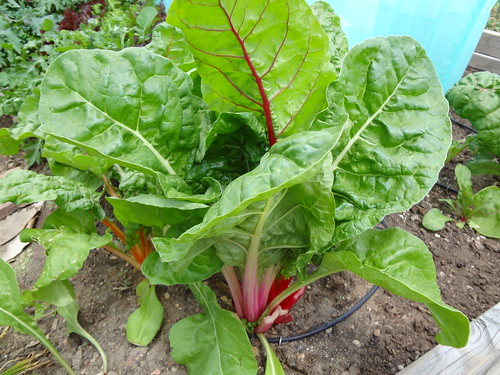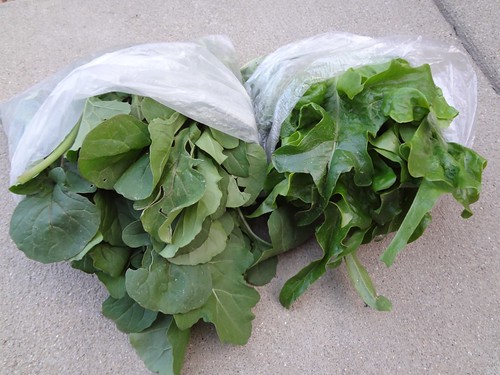AND. We filled the raised bed with sheet mulch - cardboard, manure, and wood chips (all of which we can source for free). The layers should decompose over the winter and worms and other bugs should churn it up so that by the spring we have an excellent soil to plant in. Here's a step by step:
Lay down a thin layer of manure.

Be sure to water each layer as you go.

Layout the cardboard. Cover any exposed seams with newspaper.
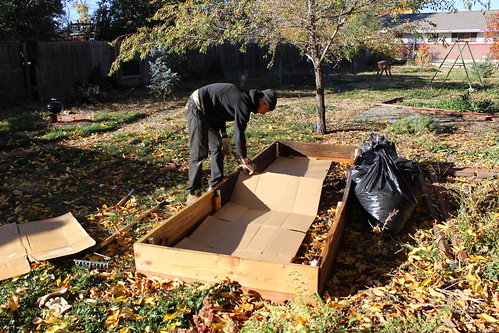
Add some more manure.
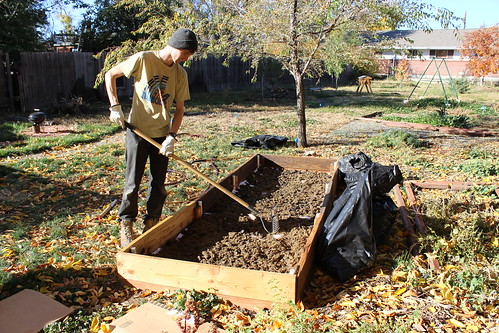
Add a whole lot of wood chips.
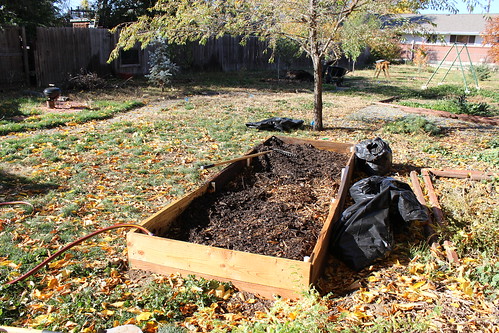
We covered the top with leaves just because.
















